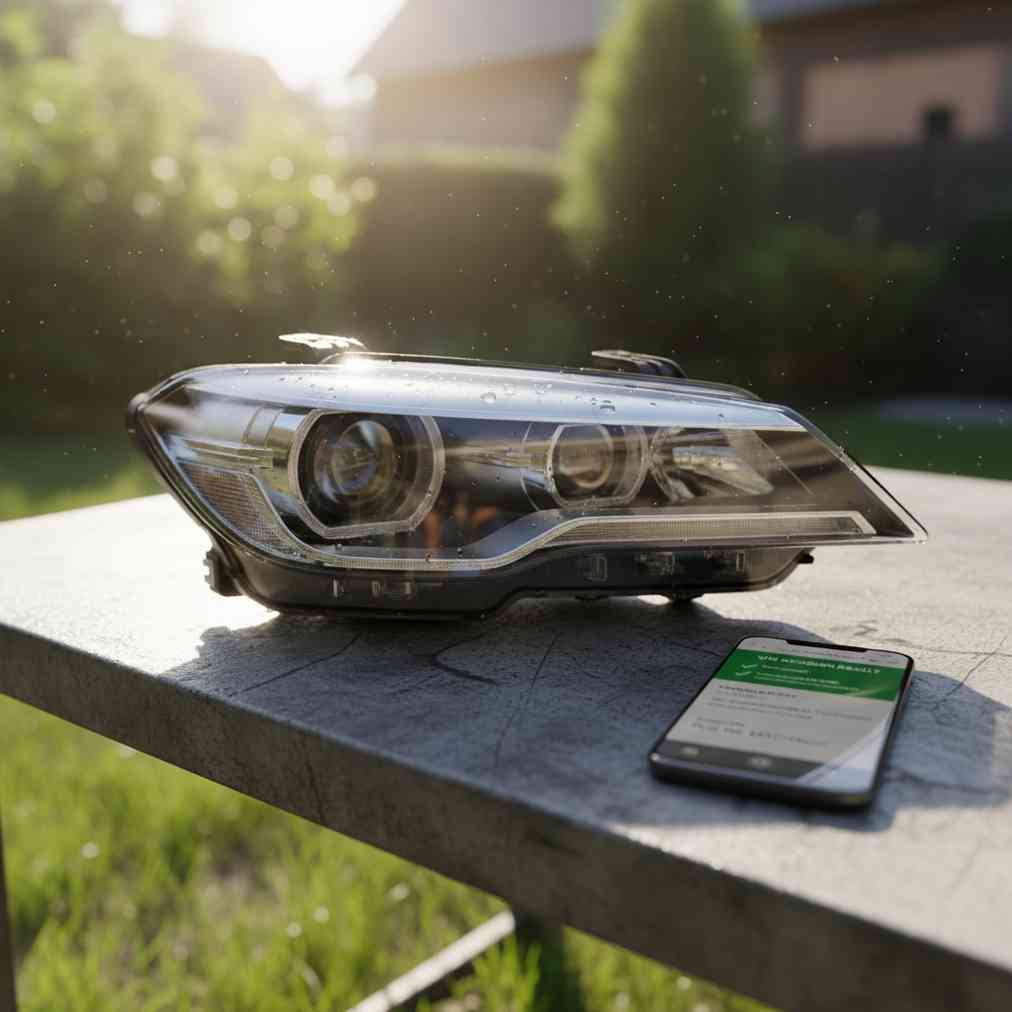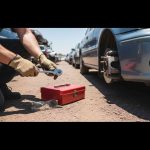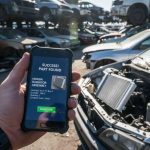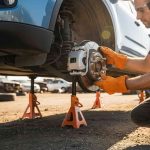Understanding VIN Decoders and Their Role in Parts Compatibility
When searching for used auto parts, relying solely on year, make, and model can lead to costly mistakes. A Vehicle Identification Number (VIN) provides the most accurate method for ensuring parts compatibility, revealing specific details about engine codes, trim levels, and factory configurations that generic searches might miss.
The 17-character VIN serves as your vehicle’s DNA, containing crucial information that determines whether a replacement part will fit and function correctly. Professional mechanics and experienced junkyard enthusiasts understand that this precision can mean the difference between a successful repair and a frustrating return trip to exchange incompatible parts.
How to Read a VIN for Accurate Parts Matching
The VIN structure follows a standardized format that reveals specific vehicle characteristics essential for parts compatibility. Understanding each section helps you decode the information needed for accurate parts selection.
VIN Structure Breakdown
| VIN Section | Characters | Information Revealed | Parts Compatibility Impact |
|---|---|---|---|
| World Manufacturer Identifier (WMI) | 1-3 | Manufacturer and country of origin | Brand-specific part requirements |
| Vehicle Descriptor Section (VDS) | 4-9 | Model, body type, engine code, transmission | Critical for engine and transmission parts |
| Vehicle Identifier Section (VIS) | 10-17 | Model year, assembly plant, serial number | Production changes and regional variations |
The Vehicle Descriptor Section (VDS) contains the most critical information for parts compatibility. Characters 4-8 specify model details, body type, restraint systems, transmission type, and engine code, while character 9 serves as a check digit to verify VIN authenticity.
Character 10 indicates the model year using a standardized code system, while character 11 identifies the assembly plant. This information helps identify mid-year production changes or plant-specific variations that affect parts compatibility.
Best VIN Decoder Tools for Parts Compatibility
Several reliable VIN decoder tools integrate with parts databases to ensure accurate compatibility verification. Based on industry reviews and expert recommendations, here are the top-performing options for 2025:
| VIN Decoder Tool | Key Features | Best Use Case | Cost |
|---|---|---|---|
| NHTSA VIN Decoder | Official government data, recall information | Safety recalls and official specifications | Free |
| carVertical | Blockchain-secured data, comprehensive history | Tamper-proof vehicle history verification | Paid |
| EpicVIN | International coverage, market value data | Global vehicles with detailed specifications | Free/Paid tiers |
| VinAudit | Quick reports, user-friendly interface | Frequent users needing efficiency | Affordable |
| Vehicle Databases API | RESTful API, classic and modern VIN support | Business integration and bulk processing | Subscription |
The NHTSA VIN Decoder provides official government data and should be your first stop for basic vehicle specifications and recall information. For more comprehensive data, expert reviews consistently recommend EpicVIN and VinAudit for their accuracy and parts-focused features.
Specialized Parts Compatibility Tools
- Parts Retailer Integrated Tools: Major auto parts retailers like O’Reilly Auto Parts offer free VIN lookup tools that pre-filter compatible parts
- Salvage Yard Systems: Professional salvage yards use specialized databases that cross-reference VINs with available inventory
- OEM Parts Catalogs: Manufacturer-specific tools like BMW’s EPC (Electronic Parts Catalog) provide precise fitment data
- Cross-Reference Platforms: Services like car-part.com show which models interchange specific part numbers
Step-by-Step Parts Compatibility Verification Process
Following a systematic approach ensures you select the correct parts every time. This process eliminates guesswork and reduces the risk of purchasing incompatible parts from salvage yards or parts suppliers.
Pre-Purchase Verification Checklist
- Locate and Verify the VIN: Find the complete 17-character VIN on the dashboard, driver’s side door jamb, or registration documents
- Use Multiple VIN Decoders: Cross-check specifications using both the NHTSA decoder and a commercial service
- Extract Critical Specifications: Focus on engine code, transmission type, trim level, and model year from the decoded data
- Input VIN into Parts Database: Use integrated tools from reputable parts suppliers that link VINs to OEM part numbers
- Cross-Reference Part Numbers: Compare OEM part numbers with aftermarket alternatives using manufacturer cross-reference guides
- Verify Fitment with Seller: Contact the parts supplier directly and provide your full VIN for final confirmation
Advanced Verification Techniques
For complex parts like transmissions or turbochargers, additional verification steps ensure compatibility:
- Check Production Date Ranges: Some parts changed mid-year, requiring production date verification
- Verify Regional Variations: Assembly plant codes can indicate region-specific differences
- Confirm Trim-Specific Features: Premium trims may require different parts than base models
- Review Technical Service Bulletins: Manufacturer updates may affect parts compatibility
“Using the VIN to verify car parts is an essential practice for ensuring your vehicle’s safety, performance, and longevity. Vehicle parts are often specific to certain VINs and may not fit your car if you only go by its year, make and model.”
Automotive Industry Expert
Common VIN Decoding Mistakes to Avoid
Even experienced buyers can make errors when using VIN decoders. Understanding these common pitfalls helps ensure accurate parts selection and saves time and money.
Character Recognition Errors
- Confusing Similar Characters: The letters ‘I’, ‘O’, and ‘Q’ are not used in VINs to avoid confusion with numbers
- Case Sensitivity Issues: Always use capital letters when entering VINs manually
- Transcription Mistakes: Double-check each character, especially when copying from worn vehicle plates
- Incomplete VINs: Ensure you have all 17 characters before decoding
Interpretation Errors
Understanding what the decoded information means for parts compatibility prevents costly mistakes:
- Ignoring Engine Codes: Different engines within the same model may require completely different parts
- Overlooking Trim Variations: Luxury or sport packages often have unique part requirements
- Missing Production Changes: Mid-year updates can affect parts compatibility within the same model year
- Assuming Universal Fit: Never assume parts fit multiple VIN variations without verification
Mobile VIN Decoding Solutions
Modern mobile applications make VIN decoding convenient for on-the-go parts verification. The Vin Decode 2025 app exemplifies how mobile technology simplifies the process for mechanics and DIY enthusiasts visiting salvage yards.
Mobile App Features
- Camera VIN Scanning: Instantly capture and decode VINs using smartphone cameras
- Offline Database Access: Basic decoding capabilities without internet connectivity
- Parts Compatibility Alerts: Real-time notifications about compatible parts availability
- Recall Information Integration: Immediate access to safety recall data
- Save and Share Functions: Store VIN data and share with mechanics or parts suppliers
When shopping for used car doors or other visible parts, mobile apps allow instant verification of compatibility while examining the physical part, reducing the risk of purchasing incorrect items.
Industry Trends and Technology Advances
The VIN decoding and parts compatibility industry continues evolving with new technologies that improve accuracy and user experience.
Blockchain Technology Integration
Services like carVertical use blockchain technology to ensure data authenticity and prevent tampering with vehicle history reports. This technology provides additional confidence when purchasing high-value used auto parts by guaranteeing the accuracy of vehicle specifications.
API Integration for Businesses
Professional VIN decoder APIs enable businesses to integrate VIN decoding directly into their sales processes. This trend benefits salvage yards and parts retailers by providing customers with instant compatibility verification during checkout.
- Real-time Integration: Instant VIN decoding during parts searches
- Bulk Processing: Handle multiple VIN lookups for inventory management
- Custom Integration: Tailored solutions for specific business needs
- Enhanced Accuracy: Professional-grade databases with comprehensive coverage
Cost-Benefit Analysis of VIN Verification
Understanding the financial impact of proper VIN verification helps justify the time and effort invested in accurate parts identification.
| Scenario | Without VIN Verification | With VIN Verification | Potential Savings |
|---|---|---|---|
| Engine Part Purchase | 25% chance of wrong part | Less than 1% error rate | $200-$500 per mistake |
| Transmission Parts | 30% incompatibility risk | Near-zero error rate | $500-$2,000 per mistake |
| Body Parts | 15% fitment issues | Minimal errors | $100-$300 per mistake |
| Electronic Parts | 20% compatibility problems | Accurate fitment | $150-$800 per mistake |
Industry statistics suggest that approximately 25% of car breakdowns may result from incompatible or substandard parts. When you need to sell a junk car due to repeated part failures, the cost of not using VIN verification becomes even more significant.
Professional Tips for Maximum Accuracy
Experienced mechanics and parts professionals share these strategies for getting the most from VIN decoders and compatibility tools:
Cross-Verification Strategies
- Use Multiple Sources: Verify specifications across different VIN decoders to catch discrepancies
- Check Physical Part Numbers: Compare decoded specifications with actual part numbers when possible
- Consult Service Manuals: Reference official repair documentation for critical parts
- Verify with OEM Dealers: Contact authorized dealers for definitive confirmation on complex parts
Documentation Best Practices
Maintaining proper documentation helps track parts compatibility and supports warranty claims:
- Save VIN Decode Results: Keep records of all decoded specifications for future reference
- Document Part Numbers: Record both OEM and aftermarket part numbers for replacement parts
- Track Installation Dates: Monitor part performance over time to identify patterns
- Maintain Warranty Information: Keep records that support warranty claims and returns
Whether you’re finding reliable used starters or sourcing complex engine parts, following these professional practices ensures successful repairs and long-term reliability.
Future of VIN Decoding and Parts Compatibility
The automotive industry continues advancing toward more sophisticated VIN decoding and parts compatibility systems. Industry experts predict several developments that will improve accuracy and user experience.
Emerging Technologies
- Artificial Intelligence Integration: AI-powered systems that predict parts compatibility based on historical data
- Augmented Reality Applications: Visual confirmation of parts fitment using smartphone cameras
- IoT Integration: Connected vehicles that automatically share compatibility data
- Enhanced Mobile Solutions: More sophisticated mobile VIN checking tools with real-time inventory integration
These advancing technologies will make VIN decoding even more accessible and accurate, benefiting both professional mechanics and DIY enthusiasts who rely on used auto parts for cost-effective repairs.
Maximizing Your Parts Shopping Success
Effective use of VIN decoders and parts compatibility tools transforms the parts shopping experience from guesswork into precision engineering. By understanding VIN structure, using reliable decoder tools, and following systematic verification processes, you can confidently select compatible parts that ensure vehicle safety and performance.
The investment in proper VIN verification pays dividends through reduced return rates, improved repair success, and enhanced vehicle reliability. Whether sourcing brake rotors and brake pads or complex transmission parts, these tools provide the confidence needed for successful automotive repairs.
As technology continues advancing, VIN decoding capabilities will become even more sophisticated and user-friendly. By mastering these tools today, you position yourself to take advantage of future innovations while avoiding costly compatibility mistakes that can turn simple repairs into expensive lessons.





Leave a Reply
You must be logged in to post a comment.